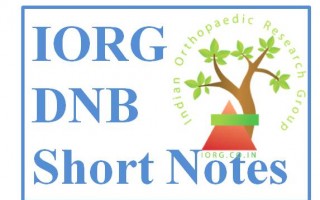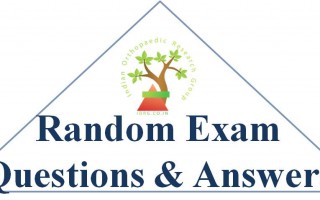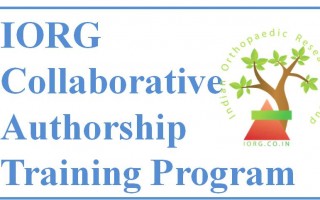DNB JUNE 2011
This Paper is contributed by Dr Rajasekhar Rao and we are grateful to him
PAPER 1
Time: 3 hours ORT/J/11/27
Max. Marks: 100
Attempt all questions in order.
Each question carries 10 marks.
1. Describe wound balistics. Discuss briefly the management of gun shot wounds.
2. Describe the features of necrotizing fascitis & its management
3. Describe the clinical features, diagnosis & management of fail chest.
4. Descibe the clinical features, investigations & treatment of thoracic outlet syndrome.
5. Classify the lesions of diabetic foot. Outline the management.
6. Define & classify Osteoporosis. Discuss in brief its clinical features .diagnosis & management.
7. Enumerate various spinal cord syndromes. Describe salient features of each syndrome.
8. Discuss the clinical presentation, differential diagnosis & management of multiple myeloma.
9. a) Describe the causes of radial nerve palsy & its presentation
b) Discuss its management.
10. Write short notes on :-
a) Synovial fluid analysis
b) Patho – anatomy of recurrent dislocation of shoulder.
PAPER – II
Write short notes on:
- a) Anatomy of FDS and FDP in hand
b) Tendon repair techniques and important suture configurations.
c) Management of acute zone II flexor tendon injuries.
2. Describe the pathoanatomy of clubfoot. Discuss briefly the principles of Ponseti technique.
3. Clinical, pathological and radiological features, staging and management of Ewing’s sarcoma.
4. Define Carpal Tunnel syndrome. Describe its anatomy, causes and management
5. a) Prognostic factors in Legg Calve Perthes disease
b) Pavlik Harness
6. a) What is an isotonic contraction?
b) Classify isotonic muscle contraction
c) Give an example of concentric and eccentric muscle contraction in gait cycle.
7. a) what is short wave diathermy?
b) How is it different from Microwave Diathermy?
c) Indications and contraindications of short wave & microwave diathermy.
8. Explain in brief about crutch walking patterns of gait in crutch walking and their importance.
9. Pathogenesis, diagnosis and management of renal rickets
10. a) Principles of amputation in lower limbs in children.
b) Floor reaction orthosis.
PAPER III
1. Describe mechanism of injuries and classify “Pilon fractures” outline management options.
2. Classify Periprosthetic fractures of femur following arthroplasty and describe treatment options.
3. Classify pediatric hip fractures (proximal femur). Describe current treatment options and enumerate the complications.
4. Classify fractures of distal end femur discuss the principles of their management.
5. Classify posterior fracture dislocation of with femoral head fracture and describe the management.
6. Describe the mechanis, of injury of unhappy tirad of O’Donoghue. Briefly describe the current management of chronic Ach insufficiency in young athletic adult.
7. Describe the mechanism of injury. Classify and treatment of Hangman’s fracture.
8. Classify acromic-clavicular joint injuries and describe their management
9. Discuss advanced trauma life support.(ATLS)
10. a)Role of mesenchyme stem cell in fracture healing
b) Stress fracture of neck femur.
PAPER IV
1. Describe Briefly the approach to the hip. Mention the advantages & disadvantages of each approach.
2. Describe the principles of MRI scan. Enumerate the applications of MRI in Orthopedics.
3. Describe various types of cartilage. Discuss their physiology & ultrastructural characteristics.
4. Describe calcium metabolism. Discuss clinical features & management of Osteomalacia.
5. Describe fractures healing. Enumerate the factors affecting fracture healing.
6. Describe various clinical teats for evaluation of ligamentous injuries of knee.
7. Describe bone graft substitutes, their incorporation & possible side effects.
8. Describe in brief about HIV infection, its diagnosis. Orthopedic implications & guidelines to prevent its spread during surgery.
9. a) Role of Polyethelene in Orthopedics
b) Biodegradable implants
10. c) Role of fibrin gel in Orthopedics
d) Chondrocyte culture













 India-Orth
India-Orth